A new weekend has begun and here I got you a second part of my recent trip to Sweden (here is part 1 if you like to check it). For today I'll show you some shots from our visit to the museum of Evolution.
Let's begin with the cute dinosaurs...

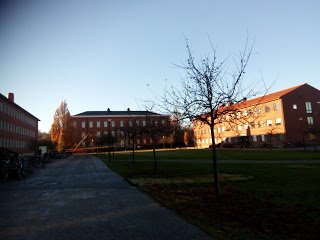
The dinosaur museum collection is on the campus, a lot of departments have their own collections and exhibitions.
We saw a triceratops:
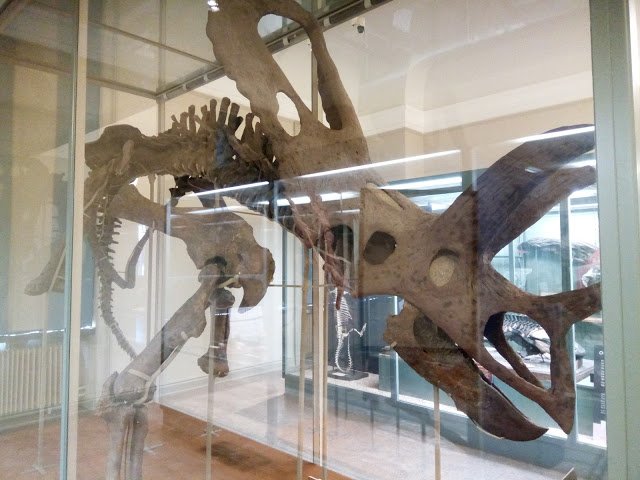
The triceratops was a herbivore that lived about 68 million years ago (late Cretaceous period). It was about 8 meters long and weighed as much as 12 tons. fossils have been found in western US and Canada. They are believed to eat low growth plants (their teeth indicate that they probably consumed too much fibrous plants). During its lifetime it had 400-800 teeth which they replaced as they were worn out. Those dinosaurs had three horns (that's what their name states) that served either as a defense mechanism (against T-Rex in particular) or for mating "rituals". [source]
Triceratops' mortal enemy, a T-Rex:
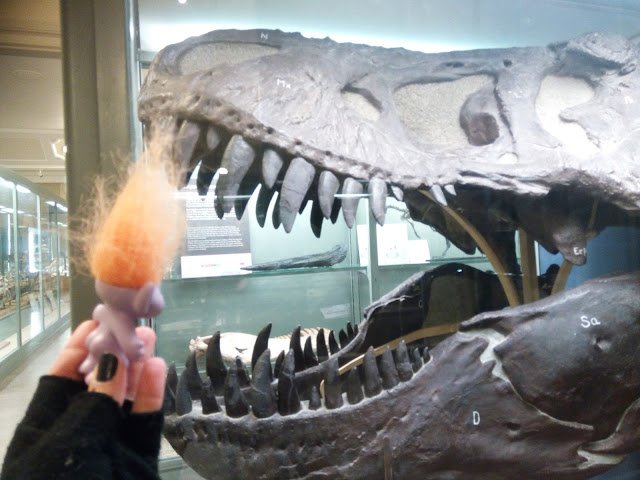
A tyrannosaurus lived about 66 to 68 million years ago (late Cretaceous Period). It had 60 razor sharp teeth that could be up to 9 inches long and it was probably an omnivore. It was about 7 meters tall and 11 meters long. It walked on two feet, used its tail to keep its balance and is believed to be one of the fiercest dinosaurs to ever exist. This extremely aggressive dinosaur fed on other large herbivores. Another feature T-rex is known for is its tiny hands which paleontologists still haven't been able to figure out what they were used for. [source]
And few more cool "lizards" like this minotaurosaurus:
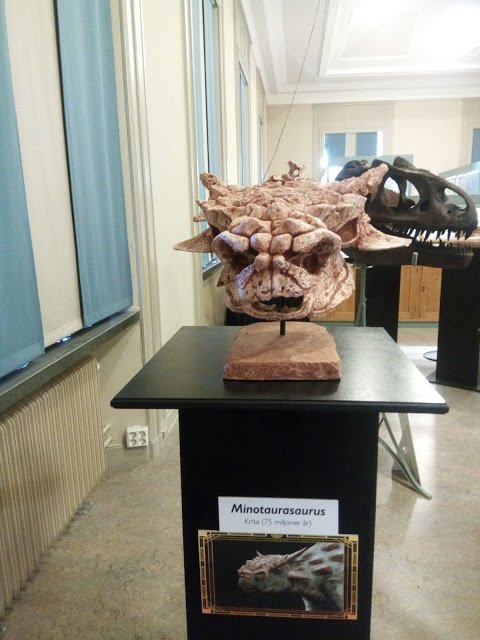
A minotaurosaurus lived in the late Cretaceous (100-66 millions years ago). It was a herbivore with a length of up to 4 meters. [source]
And those guys here, the pachycephalosaurus and the protoceratops:

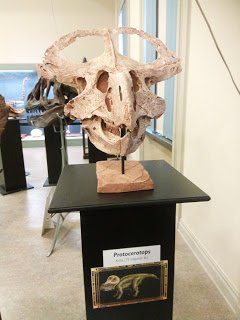
The pachycephalosaurus got its name from its 10-inch thick head (30 times thicker than a human skull). It lived 75 million years(late Cretaceous period). It was aboout 5 meters tall and weighed as much as a brown bear. It fed on plants, fruit and seeds (soft food mostly), but it is thought it could eat insects as well. Its thick skull had also some bony knobs which plaeontologist think that served as a defense mechanism or for head butting with other dinosaurs of their kind. [source]
Protoceratops lived around 71 million years ago (end of the Mesozoic period). It was a herbivore the size of a hog and weighed almost a ton and it probably laid eggs. They lived in herds for better chances of protection against predators. [source]
This is a chilotherium (a fossil rhino from Mongolia):
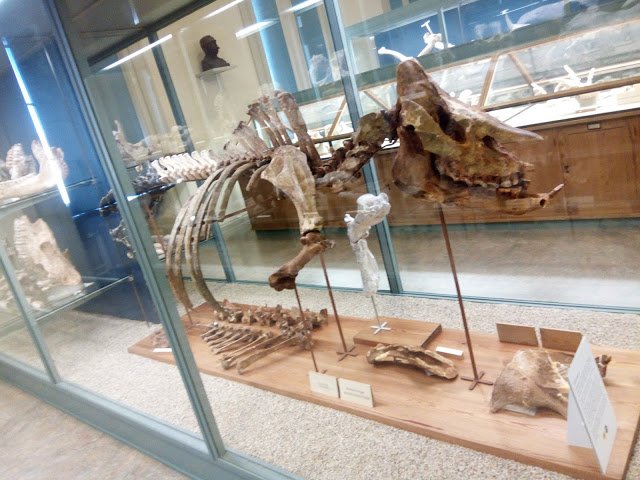
The chilotherium is an extinct rhinocerus that lived in Eurasia during the late Miocene - Early Pliocene. It did not have a nasal horn, but it bore 2 tusks (coming out of his lower jaw teeth). They were herbivores that either fed from trees or grazed. [source]
And this is an ichthyosaurus:
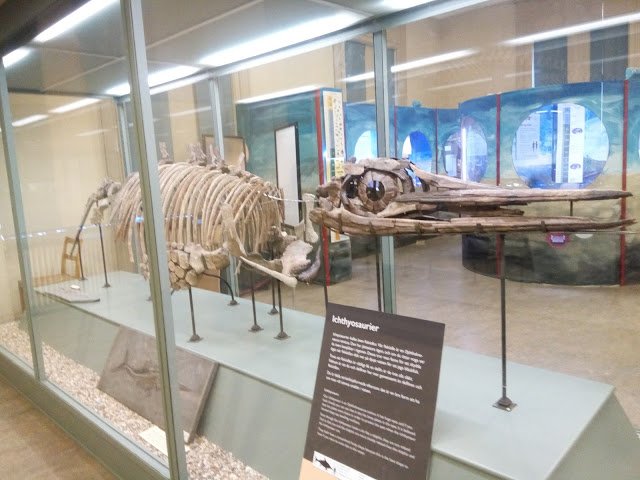
Icthyosauruses lived about 200 - 190 million years ago (early Jurassic period) in the world's oceans. They were marine creatures that gave birth to live young and fed on fish and squids. They could swim as well as a dolphin, but they were not fish, they were actually perfectly water-adapted reptiles! They became extinct because other marine animals were more dominant and preyed on them. [source]
We also got to see jaws:
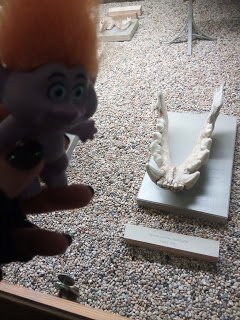
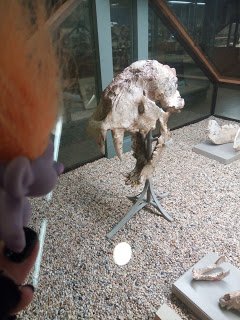
Lots of jaws:
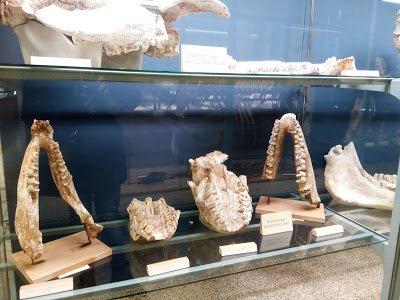
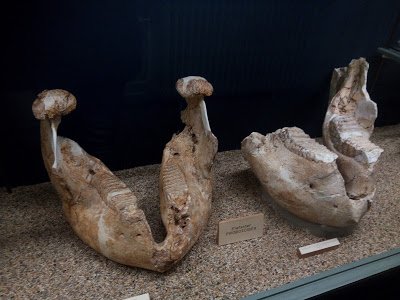
Fossils:
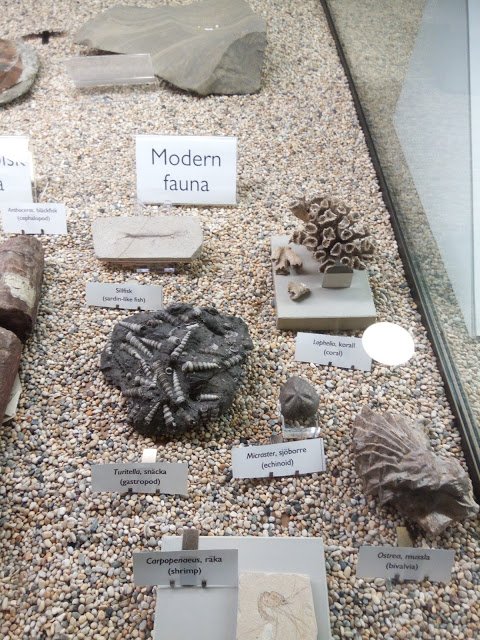
And this weird backbone of a supersaurus that to me looked more like a cello or a huge electric guitar (would you play Guitar Hero on that?):

A supersaurus lived about 150 million years ago (late Jurassic period) in North America and got its name due to its massive size (almost 5 storeys tall and 5 african elephants heavy). Something really interesting about these herbivorous giants is that paleontologists believe they couldn’t raise their necks over their heads, because if they did so, there would not be enough pressure to pump blood to their head (their hearts wouldn't be able to pull that off). So, we doubt that these creatures could raise their head to see over the top of the trees. Owing to their size, they were probably not hunted by other dinosaurs (because what dinosaur could beat those beasts?). [source]
Before leaving the museum we took a picture as Mary Anning, a world-famous fossil hunter!
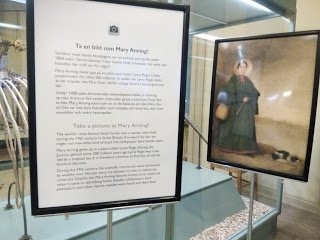
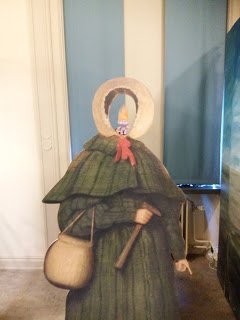
Mary Anning lived in the early 19th century and her work is really important for the development of paleontology. Her family was poor and relied financially on fossil sales. She didn't have the chance to go to university, but being self-taught and having so much practical experience she grew to be an expert. She discovered several important fossils and became famous among the paleontologists. The sad fact about her is that she didn't gain credit for her findings, which she sold to collectors. The collectors donated or sold her findings to museums giving them their names instead of hers. The Royal Society claimed her as one of the 10 most influential women scientists in British history in 2010. [source]
And after an educational outing what's the best thing to help us relax? Some good old beer of course! Cheers and have a lovely weekend!
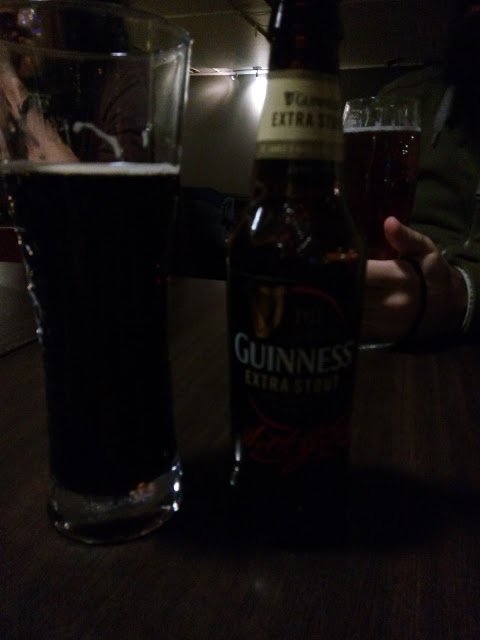
*All images by @ruth-girl

I hope you enjoyed this short educational trip (I know I did). Three more parts are coming, two from Stockholm and one last from Uppsala! Thanks a lot for reading and supporting my work!
If you please, feel free to check out my bizarre natural phenomena series, short stories, educational posts or pranks using science.
Special thanks and mentions go to:

Until my next post,
Steem on and keep smiling, people!

